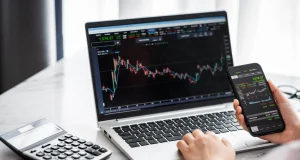
Trading in the market is lucrative for several reasons. One is that it offers an opportunity to make quick, legitimate money. Two, it gives you the chance to invest in the long term so that your money will remain safe and possibly appreciate in value. However, when one invests, one must take care of the margins. What are these margins?
Margins in each segment
Margins are crucial to the trader for several reasons. But, for each segment this has a unique perspective. For instance, in the derivatives segment, we calculate the total margin requirements as the sum of the individual exposure margin and span margin. You can use different margins for various products. This margin will depend on the individual trading style and the nature of the market at that time.
The product type to use for the Intraday trading is Margin Intraday Square off (MIS) type. Whereas for positional trading, the traders must take into the consideration the normal product type (NRML). With certain trading platforms, you can use multiple products for the intraday leverage such as Bracket Orders, Cover Orders, and MIS.

You have to pay the Intraday Trading Margin when you use it the MIS product. This charge is calculated as a percentage of the total margin (exposure margin + span margin). For equity derivatives, the span margin calculator gives the detailed picture of margins present in the intraday trading.
Margins give you the picture of the stock market
You can also get the picture of positional trading margins. You trade different underlying contracts across various expiration dates. The Carryforward (NRML) Margin is the margin you need to carry a trade forward. You can get these from the currency margin calculator for intraday trading. Always maintain the margin deposit book. This shows the total deposit provided by the customer to the broker for making the trades in equities and commodities. The broker will maintain a separate margin deposit book to make trades.
Choose a brokerage plan
Each discount brokerage company will offer its specific brokerage plans. This is split into small fee (usually Rs 9 – Rs 15) per trade for the beginners. This is because the volume of the trade they do is usually only one or two. The higher volume traders will have monthly and yearly plans that will not charge anything for the trades, only a fixed charge per month or year.
They provide the trading limits on the margin available. When you deduct the currency span margin and the Ledger Balance from the Total Value of the Collaterals you get the margin. The financial trading house you choose to do business with has advisors on its panel. In case of doubts, you can clarify issues with them when you are trading.
If you need to know how many trades you can do with the money left in your balance, you must use the NFO Margin Calculator. This will tell you how many lots you can trade with the money that remains. However, it is not a wise move to deplete the money in your account completely. So, stop when you still have some money in your account.




